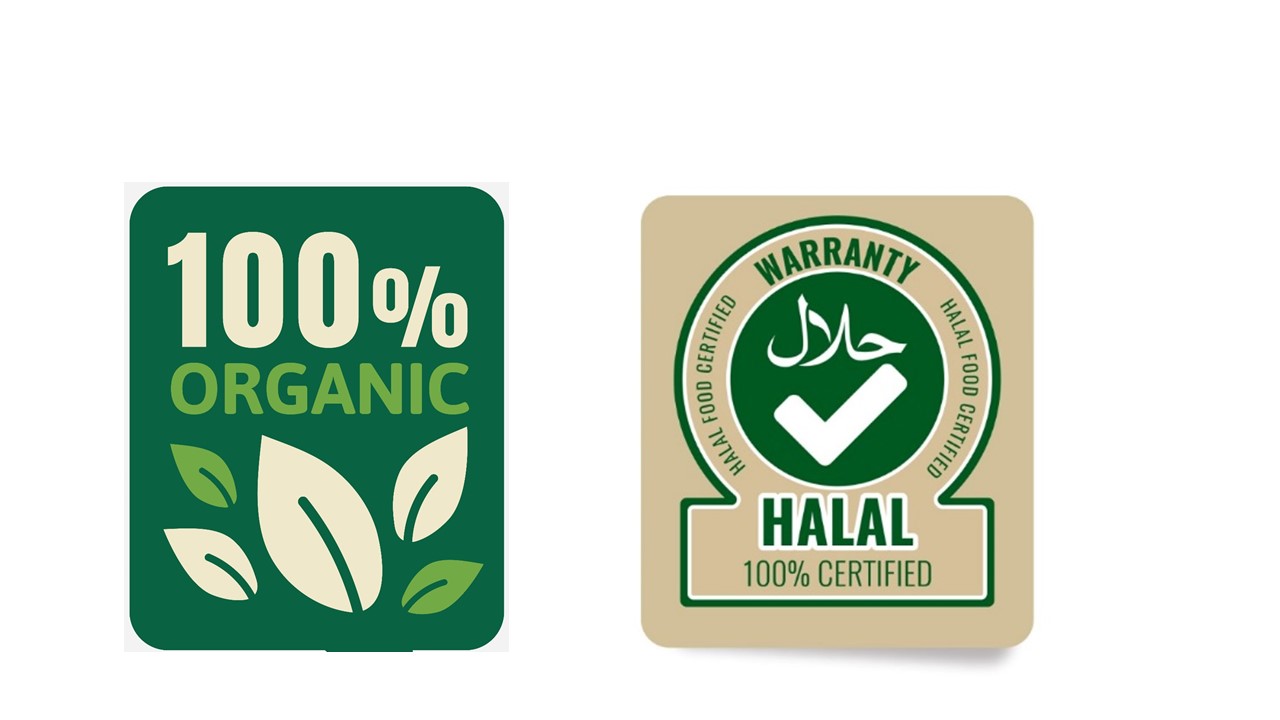Category Archives: Tendenz
In recent years, the food industry has seen a significant shift towards more specialized dietary trends, including Halal, organic, and other specialty food categories. This movement isn’t just a fleeting fashion; it’s a reflection of consumers’ growing awareness and concern about health, sustainability, ethical standards, and religious compliance in their food choices. For restaurants, adapting to these trends isn’t just about expanding their customer base—it’s about aligning with a global movement towards more responsible and conscious consumption. But are these options genuinely better than the conventional fare found in supermarkets, and what is their importance for restaurants? Let’s delve deeper.
The Rise of Halal and Organic Foods
Halal Foods: Halal food adheres to Islamic dietary laws, which specify what is permissible for Muslims to eat. The demand for Halal products has skyrocketed, not only among Muslim consumers but also among non-Muslims who associate Halal with ethical meat processing and quality.
Organic Foods: Organic food is grown without the use of synthetic pesticides, genetically modified organisms (GMOs), and artificial fertilizers. It’s sought after for its perceived health benefits, environmental sustainability, and natural farming practices.
Are They Actually Better?
Health Benefits: Both Halal and organic foods are often perceived as healthier options. Organic foods are lauded for their lower pesticide levels and potentially higher nutrient profiles. Similarly, Halal meat is considered healthier by some due to the blood drainage process, which could lead to better meat preservation and hygiene. Furthermore, halal meat avoids the inclusion of detrimental additives, preservatives, and chemicals, presenting it as a healthier alternative to other meat varieties
Environmental Sustainability: Organic farming practices are generally more sustainable and eco-friendly, promoting biodiversity and reducing pollution from synthetic chemicals. Halal slaughtering practices, when performed ethically, emphasize animal welfare, though the environmental impact largely depends on broader farming practices.
Ethical Considerations: For many, the appeal of Halal and organic foods lies in their ethical standards. Organic foods support ethical farming practices, while Halal foods cater to religious dietary requirements, offering peace of mind to consumers who are mindful of their food’s origin and production process.
Importance for Restaurants
Diversifying Consumer Base: By incorporating Halal, organic, and specialty food options into their menus, restaurants can cater to a broader audience. This inclusivity not only attracts customers with specific dietary preferences but also those who prioritize health, sustainability, and ethics in their food choices.
Competitive Advantage: Offering these options can differentiate a restaurant from competitors, positioning it as a forward-thinking establishment that is responsive to global food trends and consumer demands.
Brand Reputation: Aligning with these dietary trends can enhance a restaurant’s reputation. It signals a commitment to quality, health, and ethical standards, strengthening customer trust and loyalty.
Challenges and considerations
Conclusion
The popularity of Halal, organic, and specialty food trends reflects a broader shift towards more mindful eating habits. For restaurants, embracing these trends offers an opportunity to tap into a growing market of health-conscious and ethically driven consumers. While there are challenges in adopting these dietary options, the potential for increased customer satisfaction, loyalty, and market share makes it a worthwhile endeavor. Ultimately, the move towards Halal, organic, and specialty foods is not just a trend but a reflection of the evolving relationship between consumers and their food, emphasizing health, sustainability, and ethical considerations.
In the bustling kitchen of the restaurant world, where every role is crucial to creating a memorable dining experience, hiring and retaining the right staff is akin to perfecting a signature dish. Here’s a recipe for serene recruitment and a full house of loyal employees.
1.🌱 Seed Potential, Harvest Success:
Look beyond the culinary degrees and experience. Hire for zest and a palate eager to taste new experiences. When scouting for talent, consider those with a passion for flavor and a hunger to innovate. These are the chefs and staff who will not just follow recipes but will help you create new ones for success.
2.👥 From Kitchen to Table: In-House Recruitment:
Keep your talent search as close as your food suppliers. Cultivate a network within your locale – your in-house team knows the ingredients that make your restaurant unique and can recommend future staff who’ll share your establishment’s taste for excellence and commitment to quality service.
3.📈 Career Ladders in the Culinary World:
Just as a dish evolves from prep to plating, so should your team’s career paths. Regularly discuss career goals and provide opportunities for growth. Whether it’s a sous-chef aiming for the head chef position or a server who wants to learn sommelier skills, support their ambitions. This investment in their future will pay dividends in their loyalty and the dining experience they provide.
By applying these strategies to your hiring and retention efforts, you can create a thriving work environment where staff feels valued and patrons can sense the team spirit, one plate at a time.
- 1
- 2







1. Impact de la COVID-19 sur la Restauration :
La crise sanitaire a entraîné des fermetures temporaires de restaurants, avec des baisses significatives du chiffre d’affaires pour bon nombre d’entre eux. Selon une étude de Gira Conseil, le marché de la restauration en France a perdu près de 34% de son chiffre d’affaires en 2020 par rapport à 2019[1].
2. Aides de l’État et Résilience du Secteur :
L’État français a réagi rapidement en instaurant des mesures telles que le fonds de solidarité, les exonérations de charges sociales, et les prêts garantis par l’État (PGE)[2]. Ces aides ont été cruciales pour soutenir les restaurateurs dans cette période difficile.
3. Transformation et Adaptation :
Face à la crise, les restaurateurs se sont adaptés en diversifiant leur offre. La vente à emporter et la livraison à domicile, par exemple via des plateformes telles que Just Eat ou Deliveroo, ont connu un essor[3]. De plus, les concepts de “Dark Kitchens” ou cuisines fantômes ont émergé, offrant uniquement des services de livraison[4].
4. Redéfinition des Priorités des Consommateurs :
L’importance de l’hygiène et de la sécurité alimentaire est devenue primordiale. Les restaurateurs ont répondu à ces préoccupations en mettant en place des protocoles sanitaires stricts et en assurant la transparence dans la gestion de l’hygiène[5].
5. Perspectives :
Alors que la France sort progressivement de la crise sanitaire, le marché de la restauration est sur la voie de la reprise. La digitalisation des services, l’évolution des préférences des consommateurs et la poursuite des innovations culinaires devraient continuer à façonner le secteur.
Conclusion :
Le marché de la restauration en France a traversé une période tumultueuse, mais a également montré une capacité remarquable à s’adapter et à se réinventer. Les leçons tirées de la pandémie et les transformations en cours sont susceptibles de redéfinir le paysage de la restauration pour les années à venir.
Sources :
1. Gira Conseil, “Bilan 2020 de la restauration en France”. ↩
2. Ministère de l’Économie, des Finances et de la Relance, “Plan de relance et aides aux entreprises”. ↩
3. NPD Group, “Le marché de la livraison de repas en France”. ↩
4. FoodServiceVision, “Les Dark Kitchens en France”. ↩
5. BVA Group, “Les Français et les nouvelles habitudes alimentaires post-confinement”. ↩